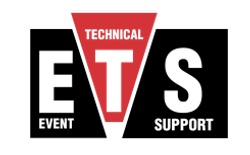Admiring Washington Tint Laws
Washington tint laws are an important aspect of automotive regulations in the state. As a law enthusiast, I have always been fascinated by the intricacies and impact of tint laws on public safety and individual privacy.
Understanding Washington Tint Laws
Washington has specific regulations regarding the darkness of window tint on cars and other vehicles. These laws are in place to ensure that drivers have a clear line of sight and to prevent potential hazards on the road.
Key Regulations
Here are some key regulations outlined by Washington State Patrol regarding tinted windows:
| Type Window | Maximum Darkness |
|---|---|
| Front Side Windows | 24% light transmission |
| Back Side Windows | Any darkness allowed |
| Rear Window | Any darkness allowed |
Impact Safety
According to a study by the National Highway Traffic Safety Administration, window tinting can reduce glare and improve visibility, especially for drivers with light sensitivity. However, excessively dark tint can also pose risks by obstructing the view of pedestrians and other vehicles.
Compliance and Enforcement
It is important for vehicle owners to comply with Washington tint laws to avoid potential fines and legal issues. Law enforcement agencies regularly conduct checks to ensure that vehicles meet the state`s tint regulations.
Case Study: Compliance Challenges
In a case study conducted by the Washington State Patrol, it was found that a significant number of vehicles were in violation of tint laws during routine inspections. This highlights the need for increased awareness and education on tint regulations.
Personal Reflections
As a resident of Washington, I appreciate the balance that the state has struck between allowing for personalization of vehicles through window tinting and ensuring safety on the roads. The dynamic nature of tint laws and enforcement mechanisms continues to intrigue me, and I look forward to staying updated on any developments in this area.
Contract for Compliance with Washington Tint Laws
This contract (the “Contract”) is entered into by and between the parties listed below, for the purpose of ensuring compliance with the tint laws of Washington state.
| Party 1: | [Party 1 Name] |
|---|---|
| Party 2: | [Party 2 Name] |
| Effective Date: | [Effective Date] |
1. Purpose
The purpose of this Contract is to ensure that Party 1 complies with the tint laws of Washington state in all relevant activities and operations.
2. Compliance Washington Tint Laws
Party 1 agrees to adhere to and comply with all applicable Washington state laws and regulations regarding vehicle window tinting. This includes, but is not limited to, following the guidelines for maximum allowable visible light transmission, reflectivity, and allowable tint darkness for various vehicle windows as stipulated by state law.
3. Liability
Party 1 acknowledges that non-compliance with Washington state tint laws may result in legal and financial consequences. Party 2 shall not be held liable for any violations of state tint laws by Party 1.
4. Amendments
Any amendments or modifications to this Contract must be made in writing and agreed upon by both parties.
5. Governing Law
This Contract shall be governed by and construed in accordance with the laws of the state of Washington.
6. Signatures
The parties hereto have caused this Contract to be executed by their duly authorized representatives as of the Effective Date.
Washington Tint Laws: Your Top 10 Burning Questions Answered!
| Question | Answer |
|---|---|
| 1. What are the current tint laws in Washington? | Washington state law allows for up to 24% light transmittance for front side windows and 24% for rear side and rear windows. Windshield tint strips are permitted above the AS-1 line as well. |
| 2. Can I have a tinted windshield in Washington? | Yes, you can have a tinted windshield in Washington, but it must allow at least 70% of light to pass through. |
| 3. Are there medical exemptions for window tint in Washington? | Yes, individuals with light-sensitive conditions or medical conditions that may require increased protection from the sun can apply for a medical exemption for window tint in Washington. |
| 4. Is it legal to have red or amber tinted windows in Washington? | No, it is not legal to have red or amber tinted windows in Washington as it may obstruct the view of the driver and can be a safety hazard. |
| 5. Can law enforcement officers in Washington issue tickets for illegal window tint? | Yes, law enforcement officers in Washington can issue tickets for illegal window tint violations, and drivers may be required to remove the tint to comply with state law. |
| 6. Are reflective or mirrored tints allowed in Washington? | No, reflective or mirrored tints are not allowed in Washington as they can cause distractions for other drivers on the road. |
| 7. What is the fine for illegal window tint in Washington? | Fines for illegal window tint in Washington can vary depending on the county and severity of the violation, but can range from $124 to $250. |
| 8. Are there any restrictions on tint darkness for SUVs and trucks in Washington? | No, there are no specific restrictions on tint darkness for SUVs and trucks in Washington. The same regulations apply to all vehicles. |
| 9. Can I have tinted headlights or taillights in Washington? | No, tinting headlights or taillights in Washington is prohibited as it can reduce visibility and pose a safety risk for other drivers. |
| 10. Do I need to have a tint certification sticker on my car in Washington? | Yes, if your car has tinted windows, you are required to have a tint certification sticker on the driver`s side door jamb to indicate that the tint complies with state regulations. |
